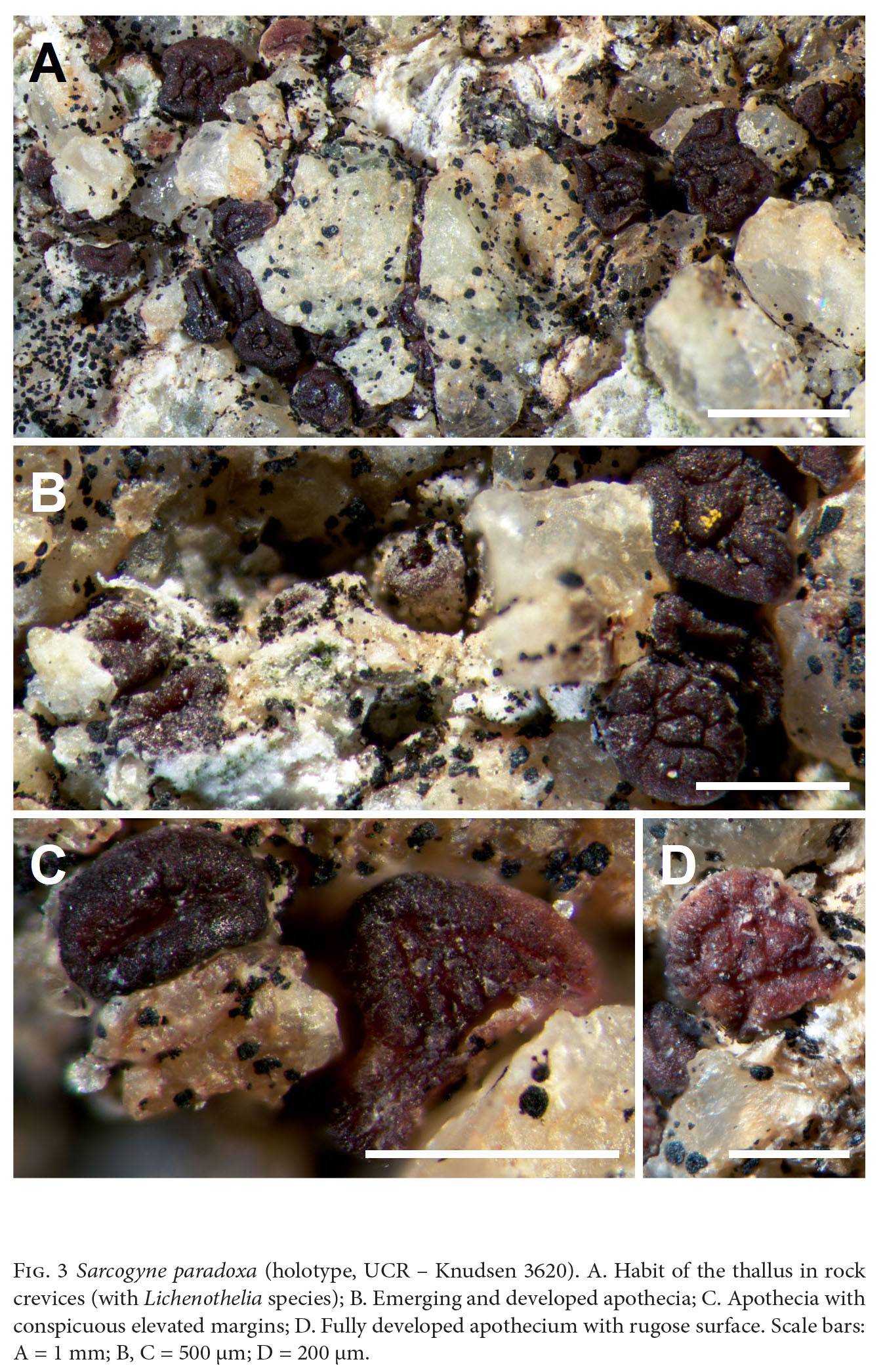
- Home
- Search
- Images
- Species Checklists
- US States: O-Z >
- US National Parks
- Central America
- South America
- US National Parks
- Southern Subpolar Region
|
|
|
|
Family: Acarosporaceae
|
MB#831963 Diagnosis. Differs from Acarospora subfuscescens by its reddish brown to brown apothecia that remain brown when hydrated. TYPE: USA, California, San Bernardino Co., Joshua Tree National Park, below Belle Mountain, in unnamed wash, 34.0189°N 116.0025°W, 1382 m, common on granite boulder on wash, apothecia emerging from rock, 22 August 2005, K. Knudsen 3620 (Holotype, UCR; isotype, ASU) [editorial note by K. Knudsen & F. Bungartz: ASU does not hold an isotype specimen, but only a "topotype", i.e., a specimen collected at the same locality, but numbered as K. Knudsen 3607 (ASUL002443)]. Etymology. Named because it grows as either an endolithic lichen or a lichenicolous fungus. Description. Thallus in non-parasitic specimens endolithic, the algal layer occurring in the substrate below the apothecia beneath a mycelial base continuous with hypothecium. In parasitic specimens endokapylic, no algal layer occurring in substrate below host, apothecia emerging from the host. Chemistry. Spot tests C–, KC–, K–. P–. Ecology & distribution. Occurring in siliceous rock, usually granite, as an endolithic lichen or endokapylic in the thallus of crustose lichens as a non-lichenized parasite in North America (California) and Asia (Afghanistan, Xinjiang in China) (Knudsen & Kocourková 2008, 2009; L. Nurtai, pers comm.) The specimen from Afghanistan at GZU is a parasite on an unknown lichen on granite. The specimens from Xinjiang are endolithic lichens on granite. Based on the distribution of Acarospora gyrocarpa (H. Magn.) K. Knudsen & M. Westb. [≡ Polysporina gyrocarpa (H. Magn.) N.S. Golubk.] in China and southwestern United States, S. paradoxa is expected like A. gyrocarpa to be widespread but probably rare in the Chihuahuan, Mojave, and Sonoran Deserts in southwestern North America. (Knudsen & Kocourková 2009). The species is easily over-looked in field inventories. |










